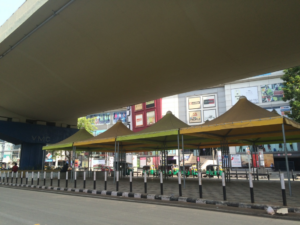Neglected public space under the city’s elevated bridges, highways, rail lines, can be converted into valuable community assets.
Space congestion with the ever evolving population growth is in direct relation to the Infrastructure of the city. Housing, public amenities, parks, hospitals, roads, flyovers , sewage and water treatment issues and other necessary activities have become an integral part of any urban design project. With the smart cities evolving everywhere these spaces under the flyovers and various other dead spaces can no longer be thought as afterthought. They need to plan and designed to cater to masses.

It is always seen the spaces beneath this elevated infrastructure became neglected and dispirited. This substantial design solution represents an untapped public asset that has the potential to radically transform city’s urban fabric. Municipal Corporation has already taken a decision to use the under bridge spaces as parking space but there can me many alternatives other than parking spaces which make it more people friendly, active, public art, a gathering space, a public sit out or a spill over space, a place where people could get refreshed and protect themselves from sudden weather change. Designed Plazas can make those unsafe under bridge spaces into civic gathering spaces and make the fruitful use of the negative space.
One such example is seen in Vadodara city near fatehgunj where sensitized decision has created that traffic jammed locality into designed and smooth working urban scenario. The seamless over bridge has got interesting spaces like eateries, landscape areas, public free parking facility, plazas, civic amenities and many others. Taking further the idea of using spaces under bridges many countries have adopted ideas like having various installations that gave them a chance to post weekly events happening in the community: training classes, exercise programs, job or housing notices, and so on and according to the report, the calendar “showed that people are willing to stop and linger in a space that does not fit the traditional mold of a public space.”
Content and photograph – Architect Pooja Jaiswal